History of Coquitlam
The First Peoples
Coquitlam Heritage gratefully operates on the traditional, ancestral, and unceded territory of the Kwikwetlem First Nation, who continues to live on these lands and care for them, along with the waters and all that is above and below.
kʷikʷəƛ̓əm refers to the unique sockeye salmon that once ran abundant in Coquitlam River and Coquitlam Lake, sustaining the community for thousands of years. Archaeological evidence shows that the kʷikʷəƛ̓əm have lived in the area for at least ten thousand years. kʷikʷəƛ̓əm people proudly maintained a thriving economic, social, and cultural life rooted in caring for the land and sustainably fishing, hunting, gathering resources, and engaging in trade. The kʷikʷəƛ̓əm possess rich traditional knowledge passed generation to generation that tell their stories, place names, spirit places, trails, travel tours, traditional names, songs, and much more.
We also acknowledge kʷikʷəƛ̓əm neighbours including Tsleil-Waututh, and Katzie First Nations among other Coast Salish peoples who shared portions of these lands.
For more information about kʷikʷəƛ̓əm First Nation, please visit their website.
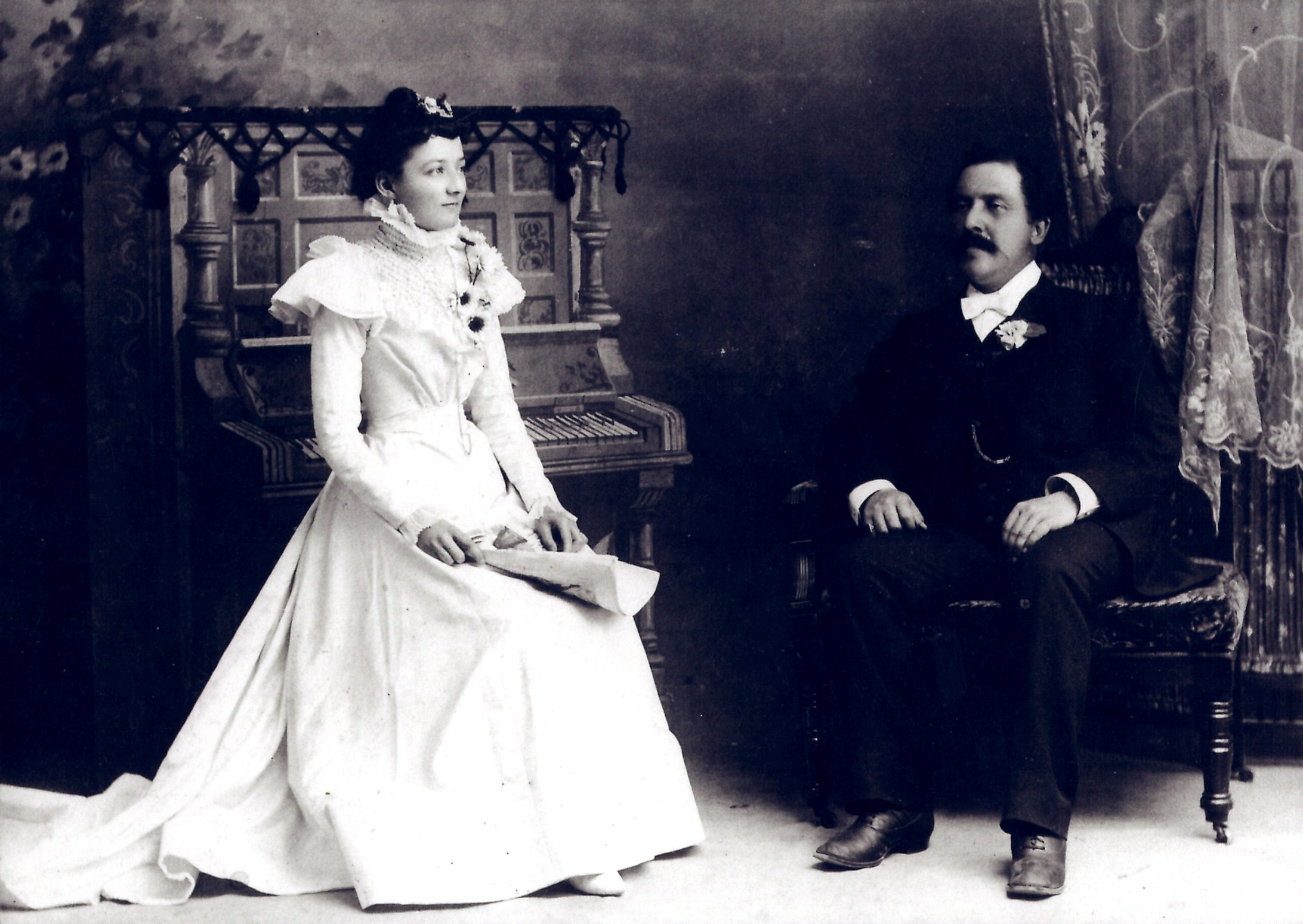
The Arrival of Settlers
Beginning in the early sixteenth century, European fishermen caught cod off of the coast of Newfoundland, and developed working relationships with the Indigenous peoples, trading metal and cloth goods in exchange for beaver furs and fresh meat. The beaver fur hats soon became extremely popular in Europe, and the fur trade very quickly grew. As a result, the North American continent was opened to exploration, settlement, missionary work, and other colonial activity.
For more information about the fur trade, please visit the Fort Langley National Historic Site.
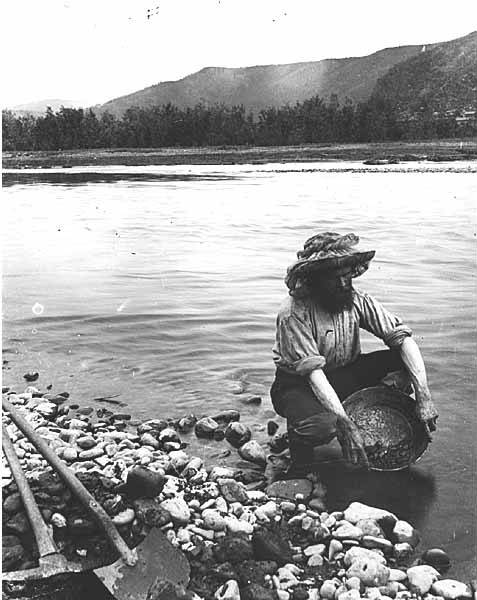
The Gold Rush
In 1857, following the discovery of gold on the Thompson River, the Fraser Canyon Gold Rush overtook the region, lasting approximately three years. The rush attracted attention from Americans, Chinese, Eastern Canadians, and Europeans. However, the delicate balance and understanding that had existed between the HBC fur traders and the Indigenous peoples was disrupted by the influx of people. In addition, there was often instances of conflict between the prospectors of different ethnic backgrounds.
Man wearing hat with mosquito netting, panning for gold in stream with gold pan, location unknown, ca 1899 (WARNER 494)
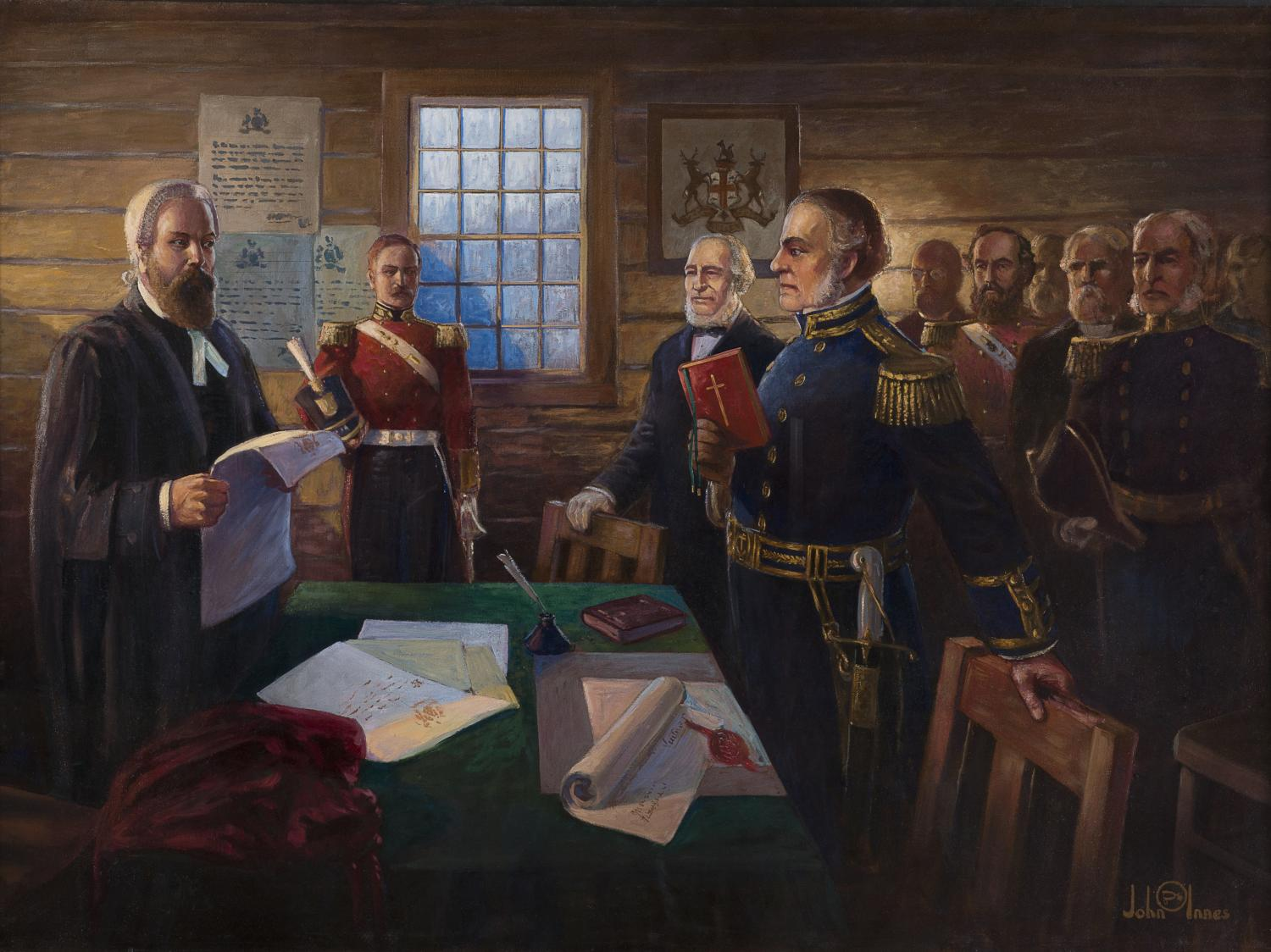
The Colony of British Columbia
Due to the instability, chaos, and attention from the US that was brought on by the gold rush, Britain decided to formally create the colony of British Columbia. The Royal Engineers, also known as the Sappers, were brought to the area to begin building roads, bridges, and other infrastructure to establish Britain’s control over the region.
In performing their duties, the Sappers dispossessed the region’s Indigenous peoples.
After the Royal Engineers disbanded, the Sappers became some of the first Caucasian settlers in Coquitlam. Due to the fact that Coquitlam was deeply forested and had access to rivers for transportation, many began working the land for lumber, beginning Coquitlam’s history of millwork.
SFU Art Collection. Gift of Post #2 Native Sons of British Columbia, 2004
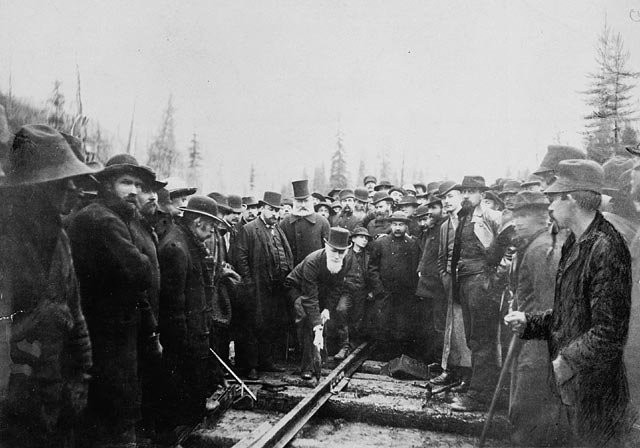
BC Joins Confederation
Canada confederated on July 1st, 1867 and on July 20th, 1871, British Columbia joined confederation on the condition that Canada fund and facilitate the development of infrastructure in the province, particularly a cross-country rail system. Despite the cost and work required, the Canadian government agreed to these conditions, fearing that BC would join the United States if they did not comply.
Work began on the CP Railway. Because BC lacked the population to supply an adequate workforce, labour was sourced from China. Some of the Chinese who worked the railway were forced to do so because they were pushed away from prospecting. The Chinese who came to work on the railroad were exploited and underpaid, and worked in highly unsafe and inhumane conditions. In fact, of the 15,000 Chinese who worked the railroad, 600 died prematurely from illnesses and injuries directly attributable to the job.
Over the next few decades, settlers from many ethnic backgrounds arrived, many of them facing discrimination in all aspects of life.
The government became increasingly restrictive towards Indigenous peoples, denying previously recognized Aboriginal title to land, banning cultural ceremonies, and moving people to reservations. Combined with the impact of diseases such as smallpox, these communities had to fight for survival – and succeeded.
Alexander Ross / Library and Archives Canada / C-003693
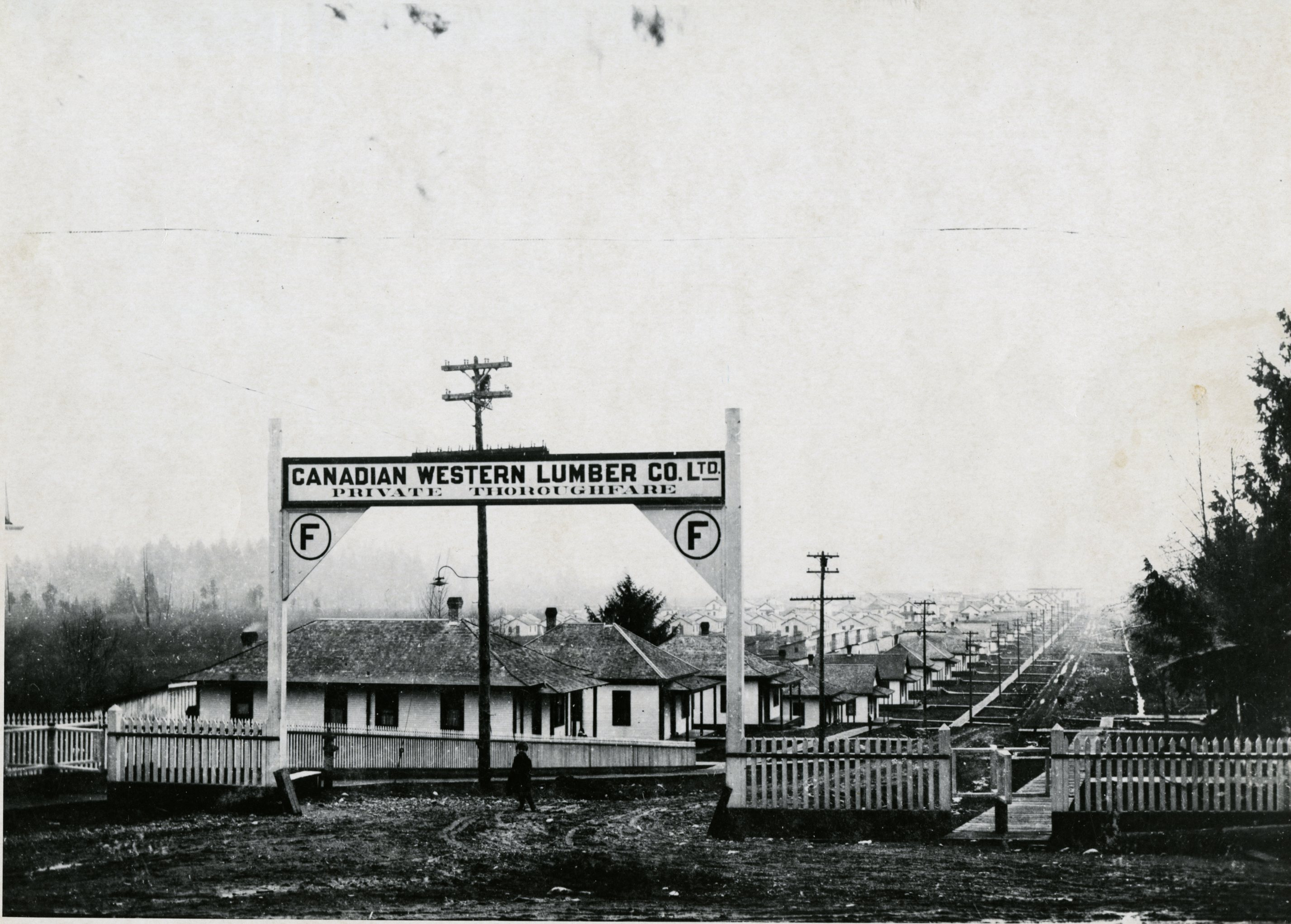
Fraser Mills
In 1889, shortly before the incorporation of Coquitlam in 1891, Canadian Western Lumber Company, also known as Fraser Mills, was founded on the banks of the Fraser River. Fraser Mills soon became the largest mill in the Commonwealth.
From 1889 to 1909, the majority of the mill’s labourers were Chinese, Japanese, and Indian. These workers faced discrimination in the workplace and in the community. White workers received higher wages for the same work as compared to their Asian counterparts, as well as housing benefits and the ability to move up in the company. Management positions were generally only accessible to American and British nationals. Most workers lived adjacent to the mill in a community called Millside, although many commuted from New Westminster.
Fraser Mills, Company's Townsite via Coquitlam Archives
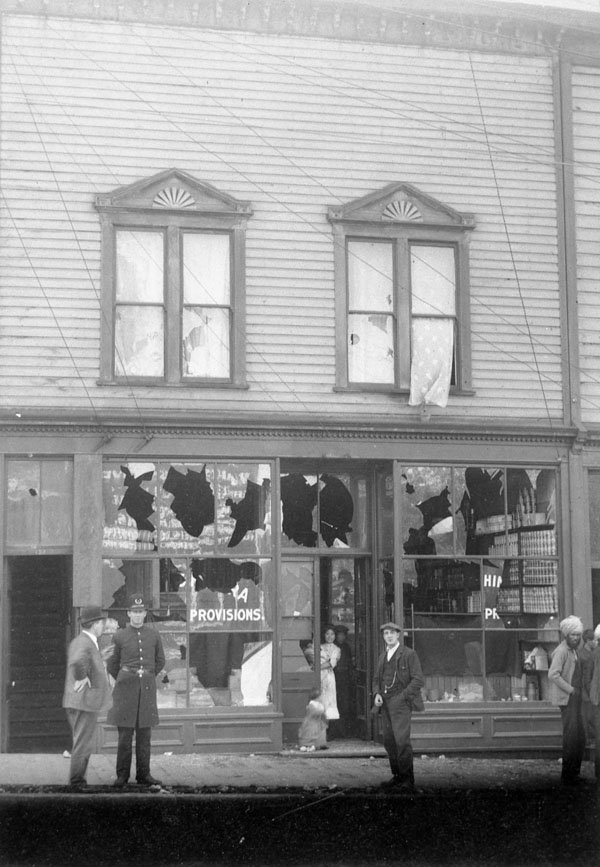
The Race Riots
The racism seen in this era escalated over time, resulting in the anti-Asian race riots of 1907. These riots took place across the west coast of Canada and the US. There was a belief that People of Colour were stealing jobs and harming societal well-being. In early September 1907, a crowd of about ten thousand White residents gathered in Vancouver to support an anti-Asian parade. The group soon attacked most Chinese and Japanese occupied buildings, and many people were severely wounded. The culture of exclusionism grew, and resulted in the further restriction of Asian immigration. Institutionalized racism was plainly visible in policymaking for multiple decades following the race riots.
Learn more about Sikh workers at Fraser Mills here.
William Lyon Mackenzie King / Library and Archives Canada / C-014118.
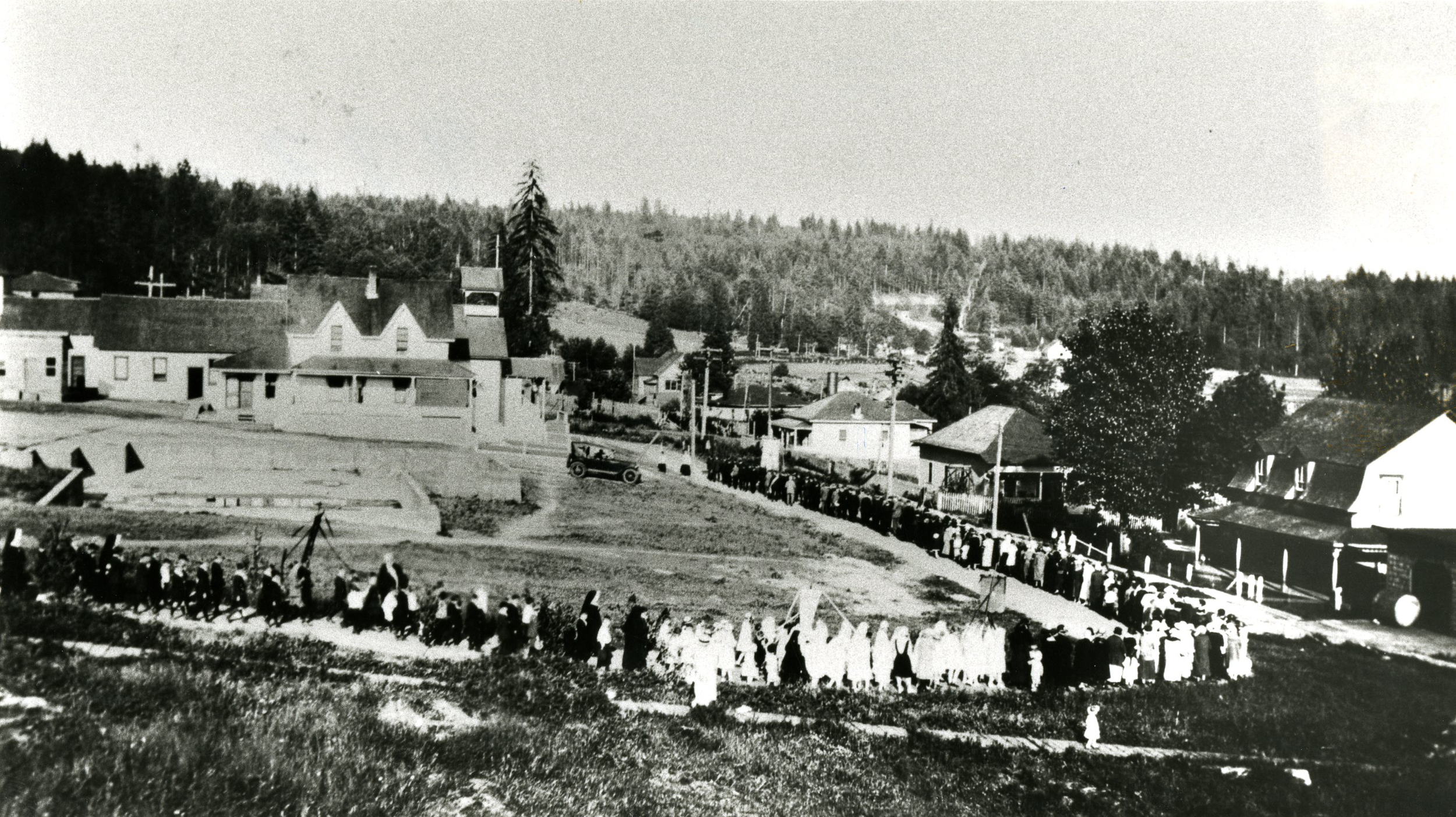
Maillardville
As a result of the race riots and of norms restricting workplace demographics, the management of Fraser Mills decided to provide incentives for French Canadians to relocate to Coquitlam in an attempt to displace the Workers of Colour. French Canadians were chosen because they were believed by the management to be easy to control, and because there was a strong mill culture in Quebec.
French Canadian settlers began to arrive by train in 1909. These workers worked roughly 60 hour weeks and those who were skilled were paid roughly $0.25 per hour. Of course, the Workers of Colour who had not been displaced were paid significantly less, for the same work.
French Canadians were offered affordable housing and the chance to bring their families along with them. In addition, the mill provided land and lumber for a Catholic Church. As a result, a mill community and sustainable workforce formed. This French-Canadian community was Maillardville, named after its first priest, Father Maillard. Maillardville was the largest Francophone community in Western Canada.
City of Coquitlam Archives - F13-S02-F13.010
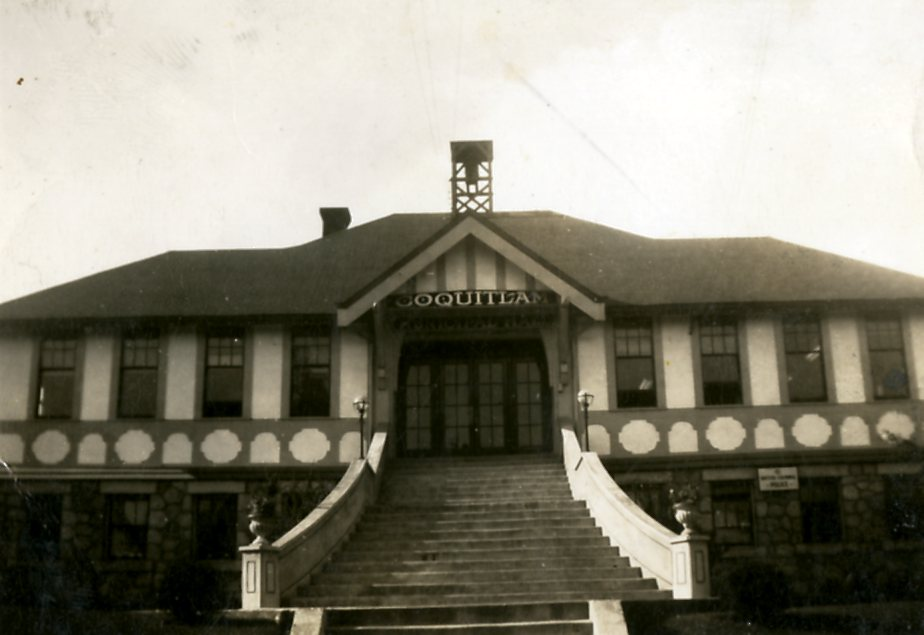
The Corporation of the District of Coquitlam
Prior to incorporation, Coquitlam was known as Westminster Junction and encompassed what is now Port Coquitlam. In 1891 a new municipality was created, the Corporation of the District of Coquitlam, overseen by a Reeve (mayor) and five Councillors. The original municipality boundaries included most of current day Port Coquitlam but did not include the Fraser Mills townsite. In 1894 Coquitlam expanded when two thirds of the residents of the west side of the Municipality of Maple Ridge joined Coquitlam. (Pitt Meadows was part of Maple Ridge until 1914).
In 1913, members of the Westminster Junction community, unsatisfied that they, a larger and more densely developed community, were supporting large areas of wilderness and the sparser populations of Burquitlam and Maillardville, petitioned the government to separate from the Corporation of the District of Coquitlam.
This was granted and the borders of Coquitlam have largely remained unchanged ever since.
The Corporation of the District of Fraser Mills, which had come into being in 1913, officially joined with the Corporation of the District of Coquitlam in 1969 to form the District of Coquitlam. Coquitlam finally became the City of Coquitlam in 1991.
Coquitlam’s City Hall was built in 1920 and was originally located at 1111 Brunette Avenue (at the time called Pitt River Road), right across the street from Mackin House. It was used until 1997 when City Hall moved to its current location, 3000 Guildford Way.
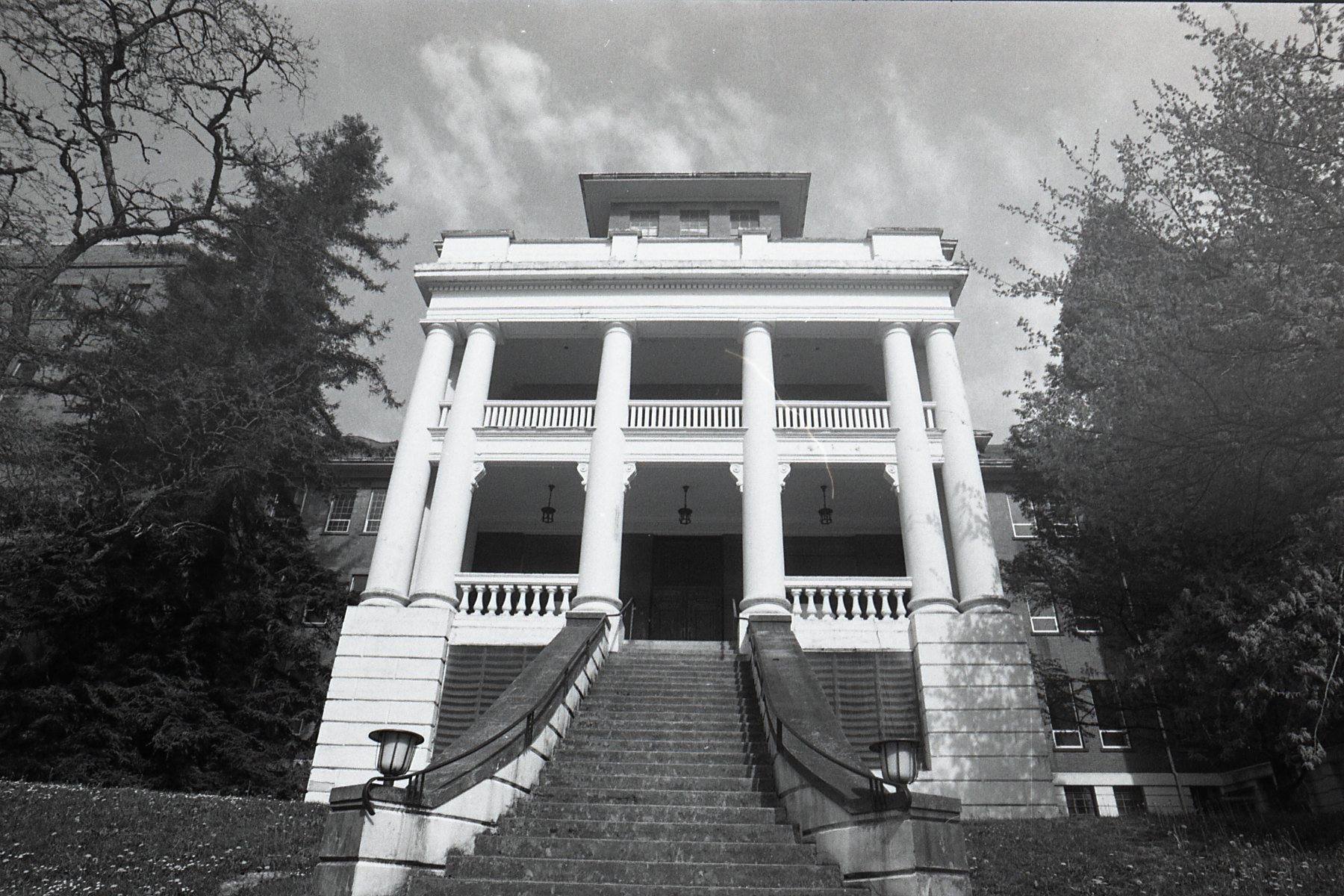
səmiq̓ʷəʔelə (suh-mEE-kwuh EL-uh)
At the turn of the 20th century, BC only had one hospital for housing and treating the mentally ill that was overcrowded. In 1904 the province purchased 1000 acres of land to construct a hospital and an adjacent farm. The hospital was to be very modern, with a conservatory, botanical garden, and arboretum on-site to facilitate care with peaceful surroundings. Construction started in 1909 and a permanent hospital was opened in 1913, originally called Essondale after Dr. Henry Esson Young, the first administrator of the hospital. The building was constructed to hold 480 patients, but by the end of the year held nearly twice that many. At the time it was one of the most progressive asylums in North America. In 1930 the hospital began treating female patients in response to overcrowding at Woodlands in New Westminster. Later another wing was built to treat patients suffering from the aftereffects of war.
By 1956 the hospital was at its peak occupancy, with over 4600 patients. At this time new medications were being developed, which led to the decline of other methods of treatment, like the controversial electroshock therapy. Numbers started to decline as new regional centres opened. The idea of closing Riverview (renamed in 1965) was first brought up in 1965 after the adoption of the Mental Health Act in BC. In 1990 the Mental Health Initiative recommended closing larger institutions in favour of smaller, more specialized facilities.
By 2002 there were 800 patients still housed at Riverview. Over time they were moved to other facilities and the last patient left in 2012. BC Housing was tasked to figure out what to do with the hospital after it closed. In the meantime, three new lodges were built on the grounds that house 64 patients and continue to be used. In 2019 the həy̓χʷət kʷθə šxʷhəliʔ leləm (Healing Spirit House) building opened with 38 beds for youth.
In 2019 the Riverview lands were renamed səmiq̓ʷəʔelə, meaning “Place of the Great Blue Heron.”
Learn more about Riverview here.
City of Coquitlam Archives - F13-S02-F13.010
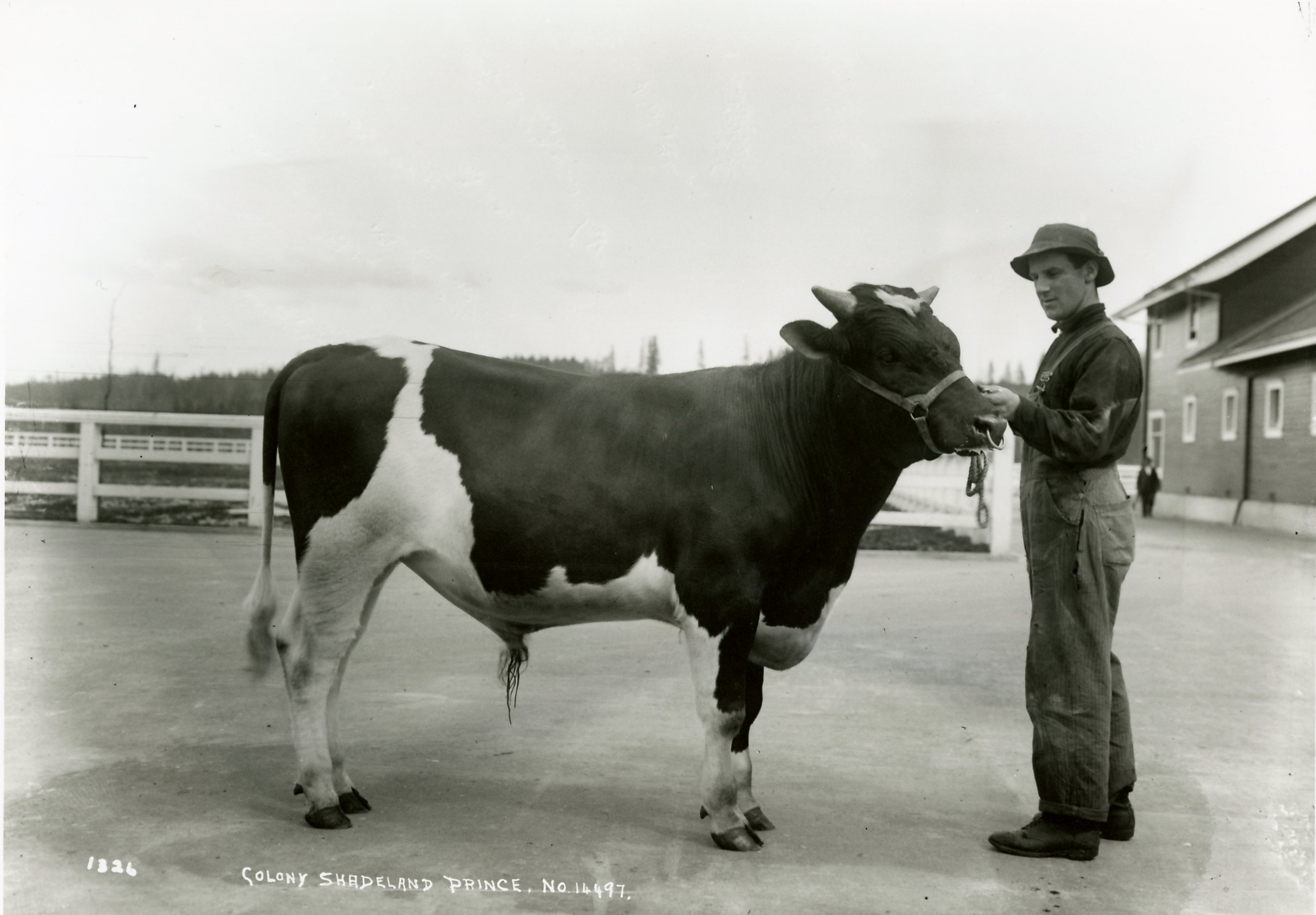
ƛ̓éxətəm (Tla-Hut-um)
ƛ̓éxətəm formerly known as Colony Farm was established to provide Essondale with food and milk and was staffed largely by patients from the hospital, both as a form of occupational therapy and to teach them valuable skills. Their Holstein cows were numerous and prize-winning, and by 1913 were producing 50000 gallons of milk a week. By the 1920s it was regarded as one of the finest farming operations in Western Canada.
In 1922 The Provincial Industrial School for Boys was opened under the Provincial Juvenile Reformatory System. The boys worked at Colony Farm and lived in cottages on-site.
In December 1946, a milker at the farm set a series of fires. The Clydesdale area on the property was lost. One employee and several Clydesdale horses were killed. The farm then lost most of its crops in the flood of 1948. In 1949 a new facility called Riverside was built to house veterans. In 1964 Riverside became a maximum-security building for prisoners and was later renamed the Forensic Psychiatric Institute.
The farm ceased operations in 1983. 1996 Colony Farm was transferred to the GVRD (later Metro Vancouver) to be managed as a regional park.
City of Coquitlam Archives - F13-S02-F13.010

Flood of 1948
In the Spring of 1948, the Fraser River overflowed its banks. There had been a heavy snowpack the previous winter, and a cool spring, but a sudden heatwave caused the snowpack to rapidly melt and overwhelm BC’s rivers. The first flooding occurred in Agassiz on May 26. A dike on Nicomen Island was next to go on May 28. On May 31 parts of Fraser Mills and Colony Farm flooded. A dike broke on the Western part of Colony Farm on June 8, two days before the water finally reached its peak. The water did not recede to a safe point until June 26.
In total, over 15000 people across the Lower Mainland were evacuated and 1500 people lost their homes. It was considered the worst flooding disaster in BC until an atmospheric river caused massive flooding across BC in November 2021.
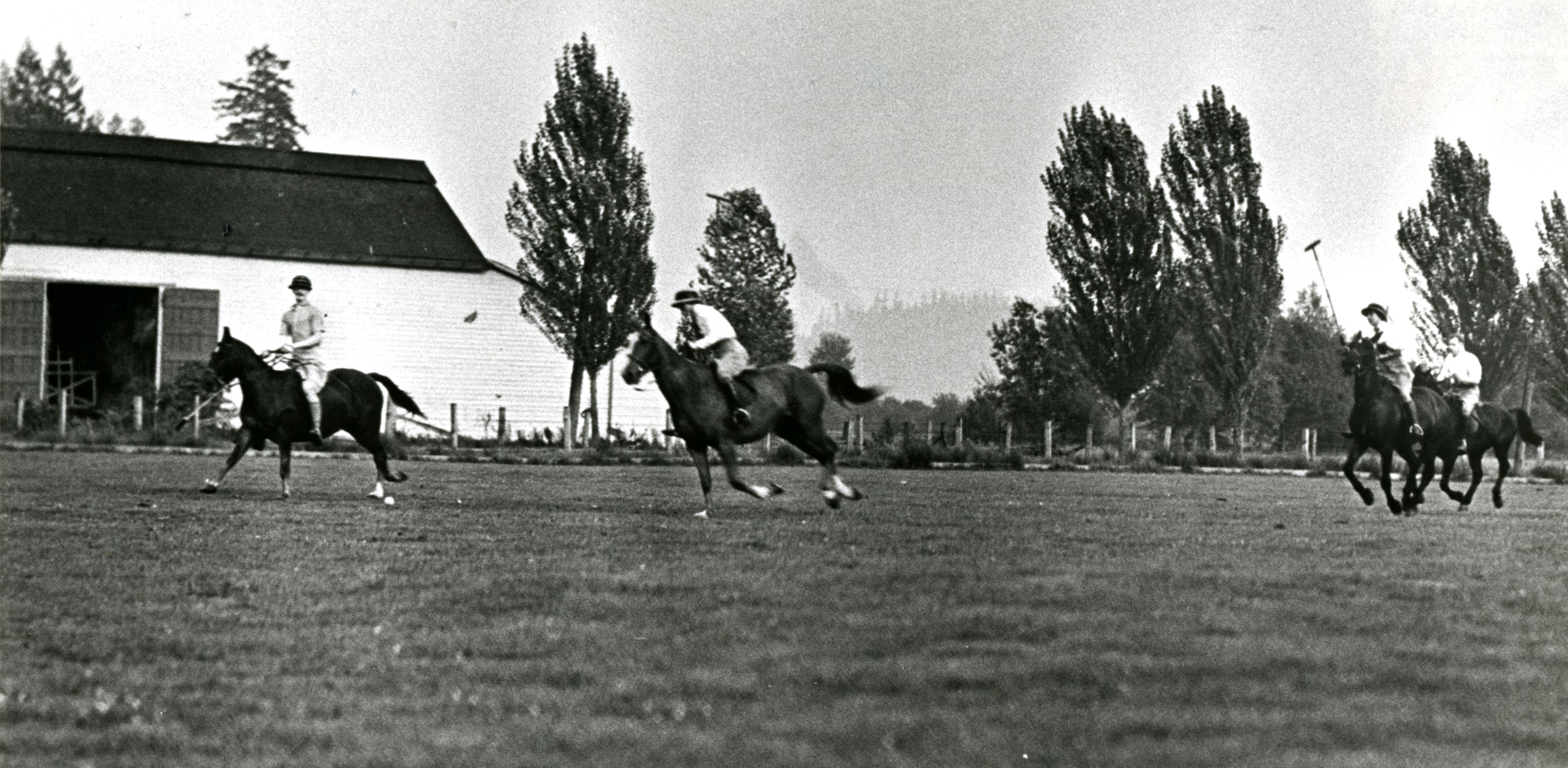
Minnekhada
The earliest records of the Minnekhada lands date to 1895 when George Alderson acquired 160 acres in a land grant. The land was sold in 1912 to Harry Leroy Jenkins, who established the Minnekhada Dairy and Stock Farm Company. Jenkins was from Minnesota and chose the name Minnekhada, which was derived from the Sioux language for ‘Rattling Water.’
After changing hands a few times, the farm was bought by Eric Hamber, later BC’s Lieutenant Governor. In 1934 he built Minnekhada Lodge as a hunting retreat. Many famous and influential people visited the lodge over the years. It is rumoured that King George VI and his wife Queen Elizabeth stayed there in 1939. Hamber eventually sold the farm and land to his neighbour, Clarence Wallace, who would also later be BC’s Lieutenant Governor.
In 1975 the land was sold to a developer, who them sold it to a developer working for the provincial government. With the defeat of the NDP that same year, the land converted to Crown land. In 1987 it was acquired by the GVRD (now Metro Vancouver) and turned into a park. Minnekhada Lodge was acquired in 1995. The park is now known for its hiking and is home to over 150 species of birds, as well as a wide range of other animals.
Learn more about Minnekhada here.
City of Coquitlam Archives - F13-S02-F13.010
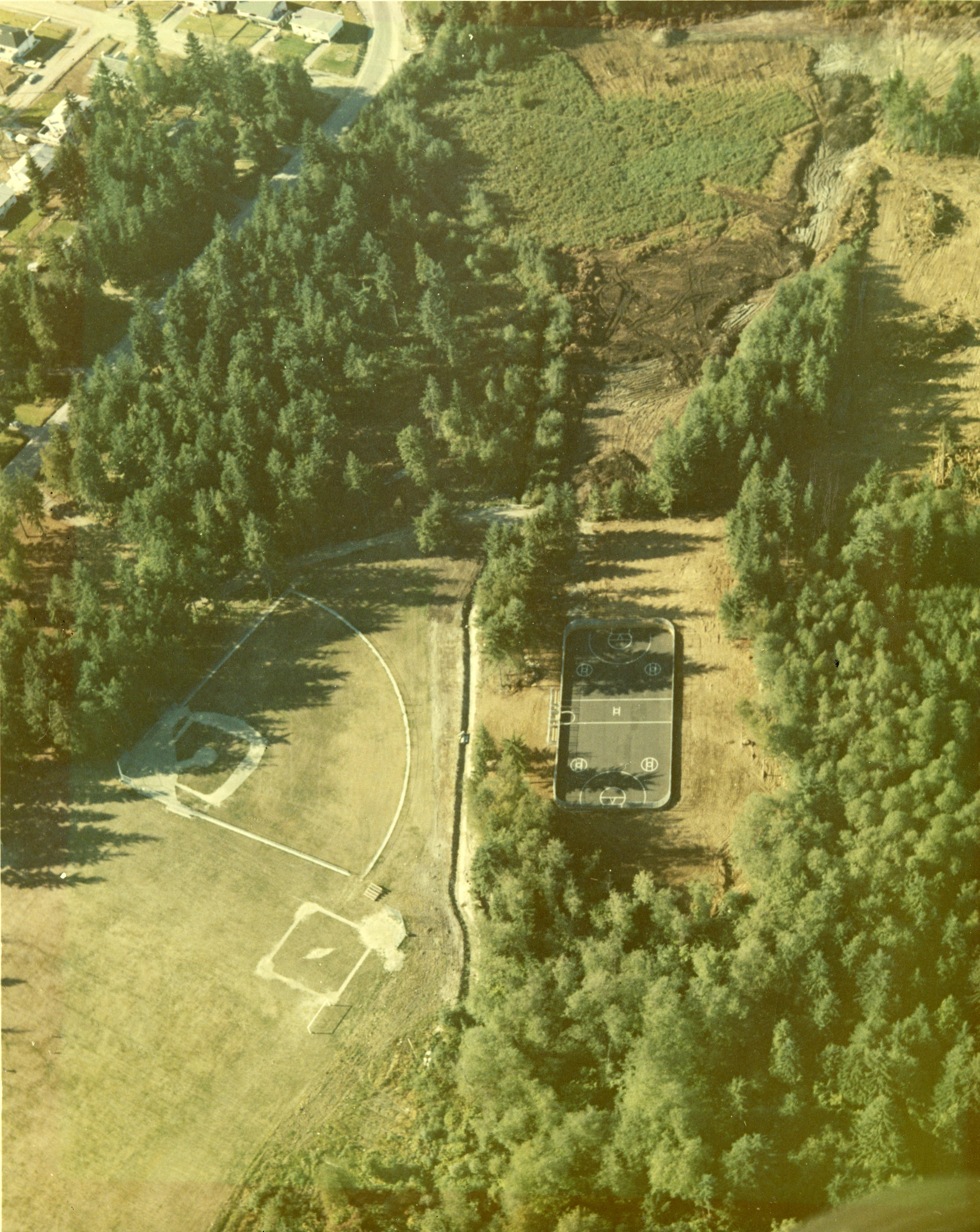
Mundy Park
George Munday, an immigrant from England, purchased 150 acres of land through a Dominion grant for homesteaders in 1895. He believed the land would increase in value as a new Canadian Pacific Railway line was put in, but it did not. The land went through many owners until it was subdivided in 1910. In the 1920s most of the old growth trees were logged. Sometime after that the land was transferred to the municipality. They turned it into a park around 1970 and named it after George Munday. At some point in the 1970s the “a” was dropped out of the name. Mundy Park remains the largest park in Coquitlam.
City of Coquitlam Archives - F13-S02-F13.010
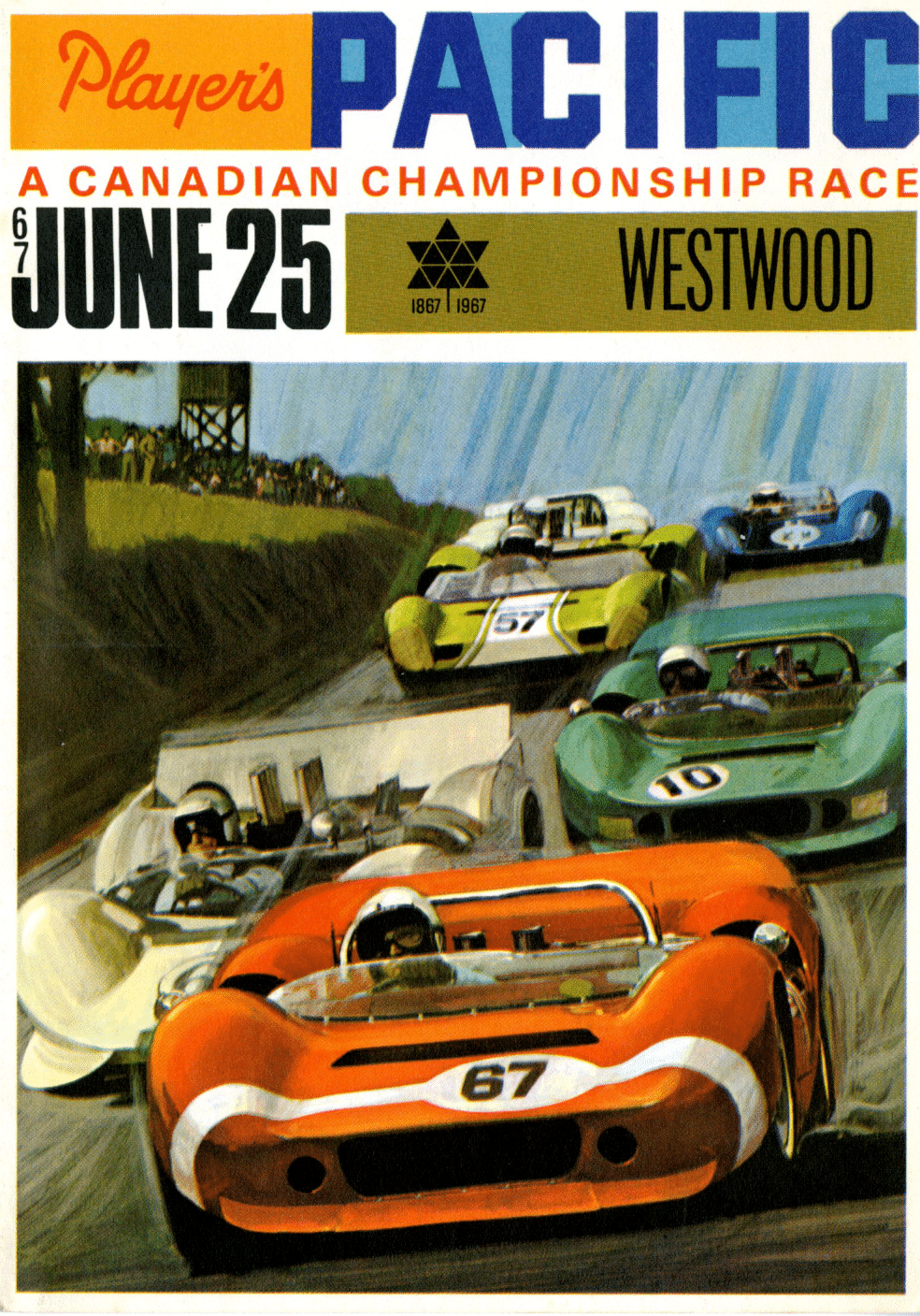
Westwood Racing Circuit
Road racing became very popular after World War II. From 1951-1958 The Sports Car Club of BC had been using the Abbotsford Airport runways for their races, but when the Royal Canadian Air Force transferred the airport to Transport Canada, the club was on the hunt for a new spot.
Earle C. Westwood, then Minister of Recreation and Conservation, helped the club lease some crown land in the District of Coquitlam. Construction began in late 1958 and the first race was held on July 26, 1959. Races continued until 1990 when the land was sold and developed into a large housing community. Some of Westwood Plateau’s street names still honour the race track (Carousel Ct and Deer’s Leap Pl).
City of Coquitlam Archives - F13-S02-F13.010
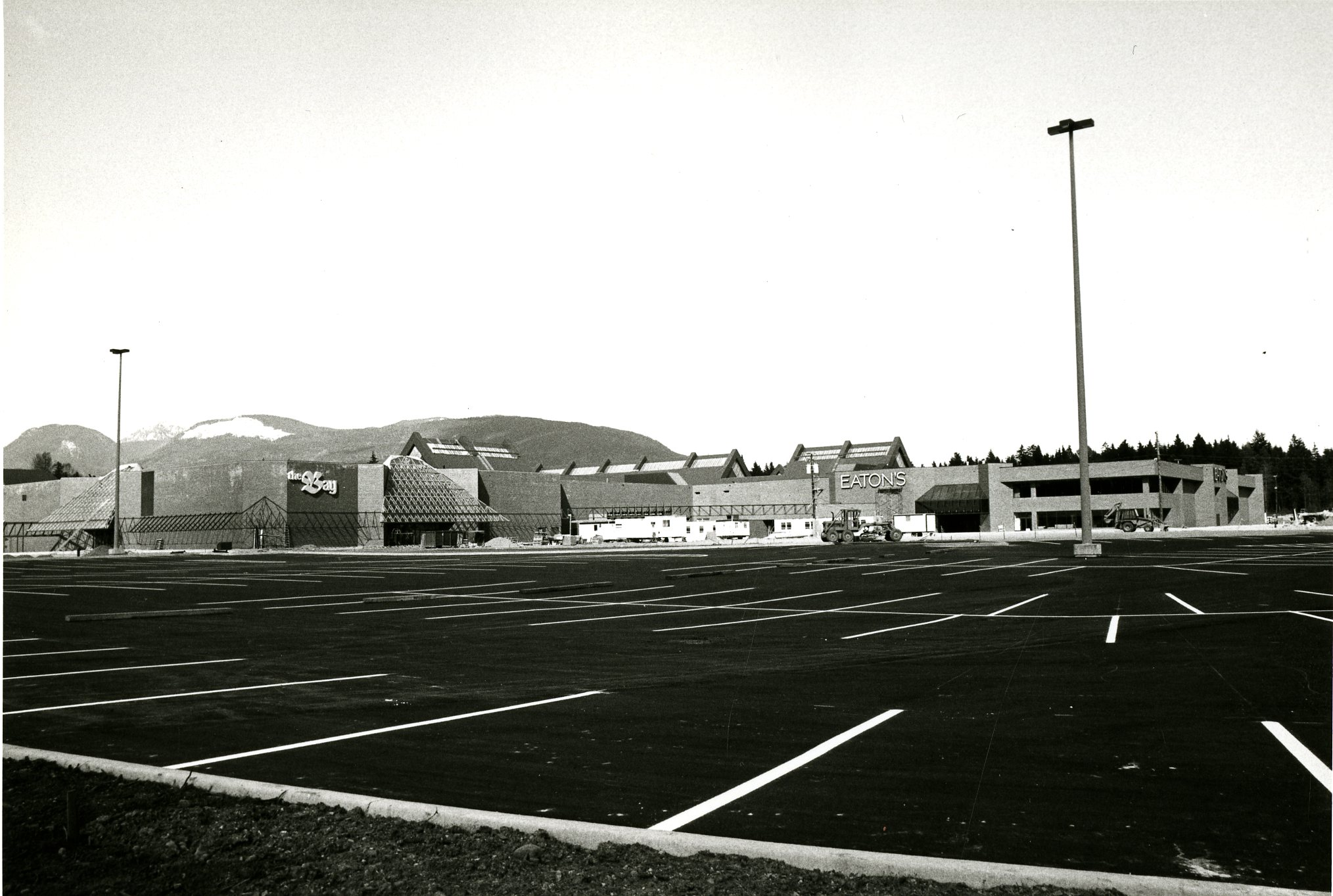
Coquitlam Centre
In 1973 a proposal was submitted to Coquitlam Council for a new Town Centre that would include a shopping mall that would be the largest in the Lower Mainland, twice the size of Lougheed Mall, and would house three department stores (Hudson’s Bay, Eaton’s, and Woodward’s) as well as 130 other retail spaces. Prior to that, the area that is now known as Coquitlam Town Centre in Coquitlam was still largely rural and unpopulated.
Ground was broken on May 26, 1977 and the mall opened to the public on May 15, 1979. It served as the catalyst for the development of Coquitlam Town Centre. In 2001 Coquitlam Centre underwent an expansion that added 70 more retail spaces and a new food court.
City of Coquitlam Archives - F13-S02-F13.010
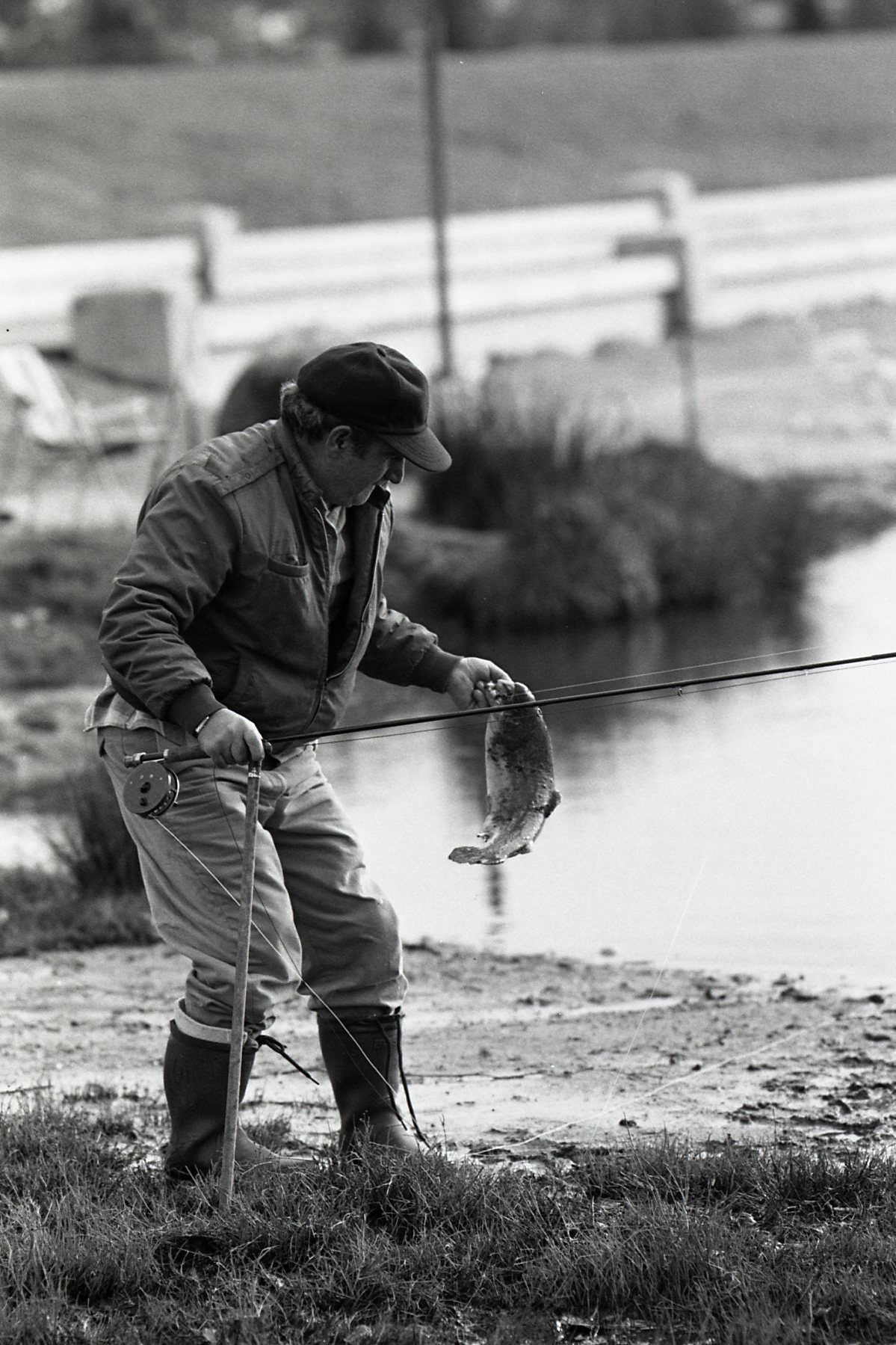
Lafarge Lake & Town Centre Park
The Lafarge company was founded in 1833 in France. In 1864 they would sign a contract to deliver 110000 pounds of lime to the Suez Canal construction project. From the 1950s to the 1970s they mined a rock quarry in Coquitlam to produce gravel. In the mid-1980s, Lafarge Canada plant manager Mel Earl persuaded the company to donate the land to the City to become a park, and a man-made lake was created. Town Centre Park opened in 1989 and two years later hosted the 1991 BC Summer Games.
Learn more about the Lafarge Lake Reclamation Project here.
City of Coquitlam Archives - F13-S02-F13.010
Images that appear on our website are courtesy of the Coquitlam Heritage Society Collection, City of Coquitlam Archives unless stated otherwise.

